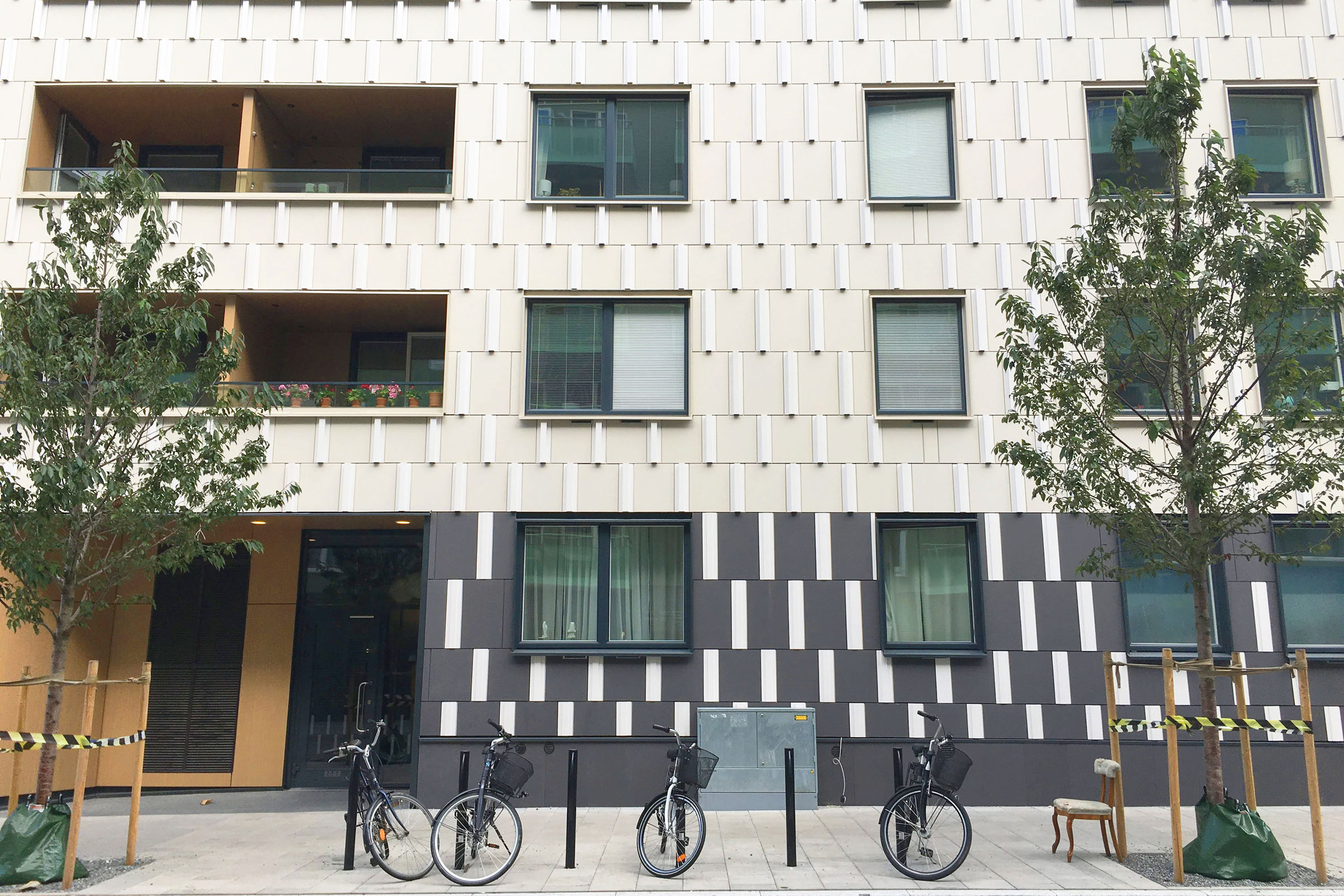Story at a glance:
- TAJO Ceramic Facade Systems by IMETCO + FAVEMANC is a marriage of beauty and brawn.
- Experts are seeing a growing demand for ventilated facades in the architectural community.
- TAJO’s systems are lighter than most of what you can find in the US but can still support heavy panels.
Today’s building industry demands a delicate balance—performance with aesthetics, sustainability with durability—and all at a reasonable price point. Building envelopes, especially, have a lot of new territory to cover. They must be able to withstand diverse environments and climates, protecting the structure and integrity behind them while meeting a diverse array of building codes, both for safety and environmental impact. They also set the tone for an entire experience within a built environment. A building’s facade speaks volumes about not only the builders and designers but also the people and organizations housed within.
Innovative Metals Company (IMETCO), a leading US manufacturer of premier metal products for the building envelope, saw this writing on the wall about four years ago when the demand for sustainable ventilated facade systems began to grow in the architectural community.
Why a ventilated facade? Simply put, a ventilated building envelope—defined as cladding designed with an internal air chamber—allows for both increased thermal and acoustic performance, reducing energy costs for heating and cooling, and with less ambient noise making its way in, improving the lived experience inside the structure. Properly designed ventilation can increase the resiliency of a structure by keeping building materials dry at all times, while using thick ceramic tiles help the structure resist against direct environmental loads such as wind, rain, and heat. Combined with a rainscreen, a time-tested building practice, ceramic facades can last generations.
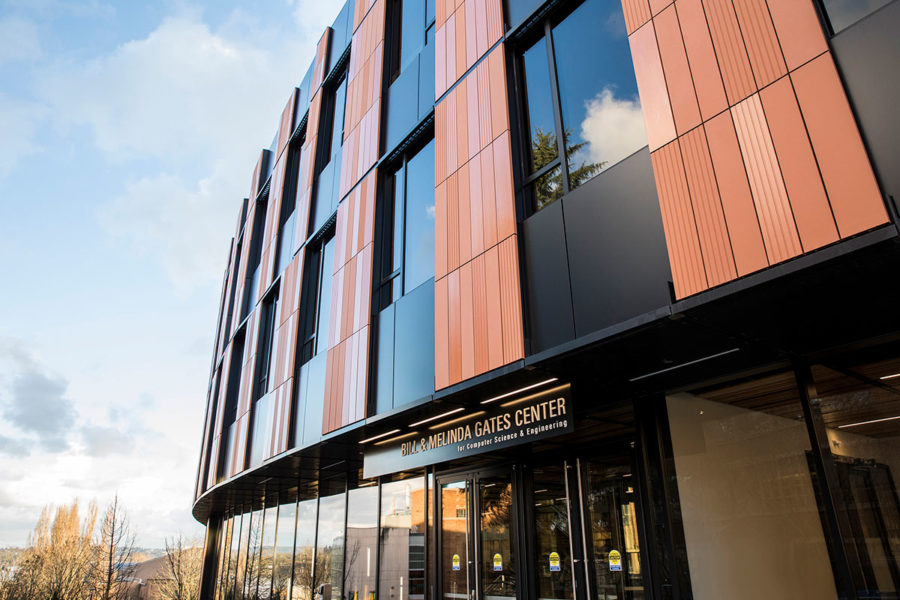
The Bill & Melinda Gates Center for Computer Science & Engineering. Photo courtesy of IMETCO
IMETCO’s high-performance metal roofing, walls, deck systems, and accessories like rainscreens were already becoming a mainstay in the green building industry for their cost-effectiveness, durability, and innovation. In Europe, Gresmanc Group’s Favemanc, a veteran of the extruded ceramics industry in Spain, had been offering their own ventilated facade systems for both private and public customers for more than 25 years, along with ceramic flooring and swimming pools.
With ceramics being a highly sustainable building material and an increased interest in green building in the US, a natural connection between the two companies developed, says Juan Gurrea, export manager at Gresmanc. “IMETCO noticed that the demand for ventilated facades was building up rapidly. On our side we have a very good, strong, and competitive system suitable for all kinds of buildings, and IMETCO has a very well-developed market in the USA, with strong links in the architect community, making this partnership the perfect one to succeed.”
Blending technology, experience, sustainability, and great design, the two companies brought TAJO to market, a ceramic ventilated facade system designed to meet the needs of the modern green builder. Lighter, easier to install, safer for buildings (with no contribution to fire risk), and endlessly customizable, this cladding system sets a new industry standard. And it can be combined with various materials or seamlessly integrated into IMETCO’s innovative IntelliScreen rainscreen systems.
To really get under the surface of what makes TAJO different, gb&d sat down with Gurrea to chat about this marriage of beautiful, sustainable building materials and innovative technologies primed for customization.
Why are architects gravitating toward ventilated facade systems?
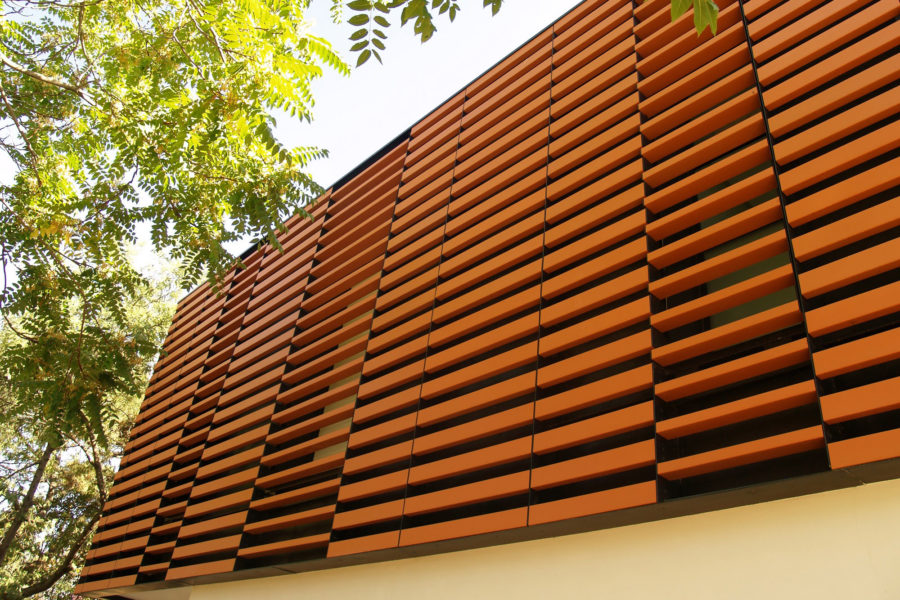
Photo courtesy of IMETCO
For one, the temperature control it allows inside the building together with the sound reduction makes our facade the perfect envelope for any building—commercial or residential. Better temperature control inside the building also makes it much more energy-efficient.
And thanks to the chimney effect created by the air chamber between the isolation material and the panels, it keeps the whole building and the isolation material dry, prolonging the life of the building many years.
Another perfect use is for renovation, thanks to its versatility and easy installation under any conditions. For this reason ventilated facade is often used for renovating buildings when they are deteriorating outside.
Describe that installation process and how it improves on other systems.

Photo courtesy of IMETCO
First we install support brackets attached to a structural element such as a concrete slab. These brackets will support the whole system. Then we install retention brackets, which are smaller and attached to the wall, to either brick or metal studs. These brackets keep the system aligned. Next the vertical profile is installed, and the horizontal profile is attached to the vertical. Finally panels are pushed in—onto the horizontal profile. The special grooving on our panels, thanks to the extrusion production method, allows the fasteners to be perfectly hidden, without the need to make incisions in the plate. Our system also allows you to easily change one single panel, if it would be necessary, without the hassle of sliding panels out and in.
But one of TAJO’s best features is that it is lighter than most of what you can find in the US. Most of our competitors in the US market are installing 30mm panels, and our support system is strong enough to hold these heavy panels. But our standard panels are 17mm, a lot lighter than others, and the system itself is lighter, too. So, in the end, we are transferring a lot less weight onto the building. Even for new buildings, if you are using panels that cover the whole building and the system is heavier, you’re going to put more strain on the building. For renovations of older buildings, especially, it is important to stay light.
How does this system marry strength and durability with aesthetics?
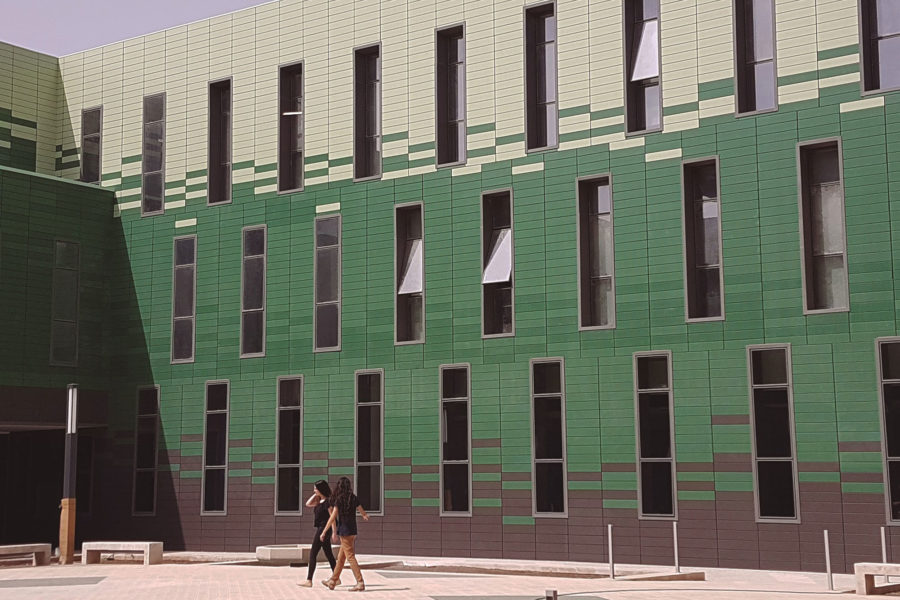
Photo courtesy of IMETCO
We invest in the latest technology and products to find the best balance between strength in the system and the best and most innovative looks—wood, stone, metal, brick, earthy looks—any color or image. From custom profiles to the glaze, there is no limit to how realistic it can look. Builders are always looking for something new and different. Sometimes they are asking for particular marble grains they can’t get from natural stone or wood grains you can’t typically put on the outside of a building. Our inkjet technology allows you to create that totally different look. Like an inkjet computer printer, we can design anything on the surface of our ceramic facades. And with a profile like our baguette, we have the ability to print a design on all sides, creating a seamless, realistic look.
In our catalog we have many options. But often a builder comes to us wanting a very particular look we don’t have in our catalog. That’s no problem for us. This system is completely customizable. For these reasons, we have won two years in a row, in 2020 and 2021, the NAN Architecture Award in Madrid for innovation and sustainability solutions.
How is your system more sustainable?
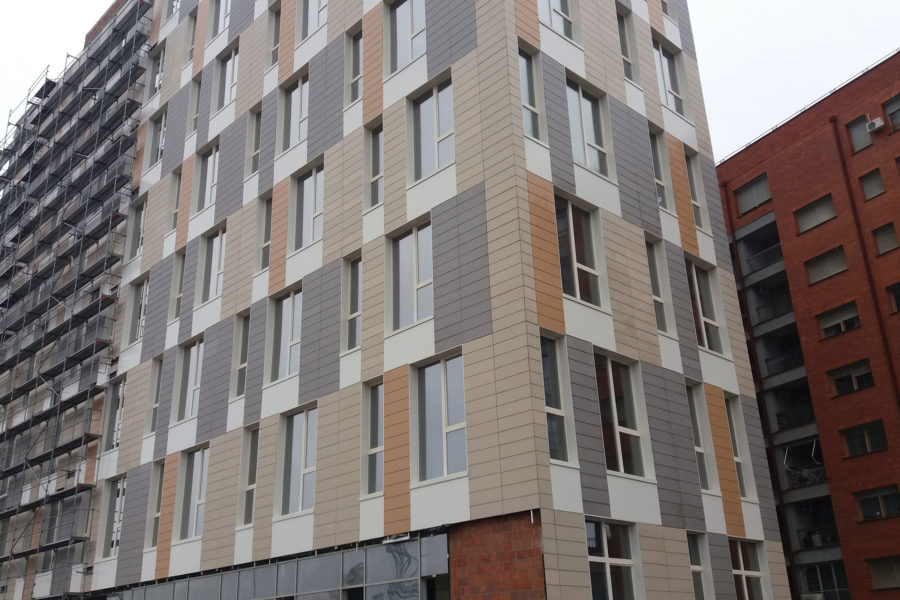
Photo courtesy of IMETCO
Minimizing our environmental impact has been a fundamental issue for Gresmanc Group since day one. This firm’s commitment is embodied in an environmentally sustainable growth model that also enables us to offer innovative ceramic products of premium quality to our customers. Our main business operations are based on the circular economy concept, with a focus on responsible production and consumption.
In our facilities, reuse of water resources, returning them to the manufacturing process following treatment, is very important to us, as is minimizing waste production by crushing and blending waste pieces for subsequent incorporation into the productive process. Implementation of energy efficiency and energy saving systems in our facilities have led to a greenhouse gas reduction, and our low-emission commercial vehicle fleet helps to reduce our carbon footprint.
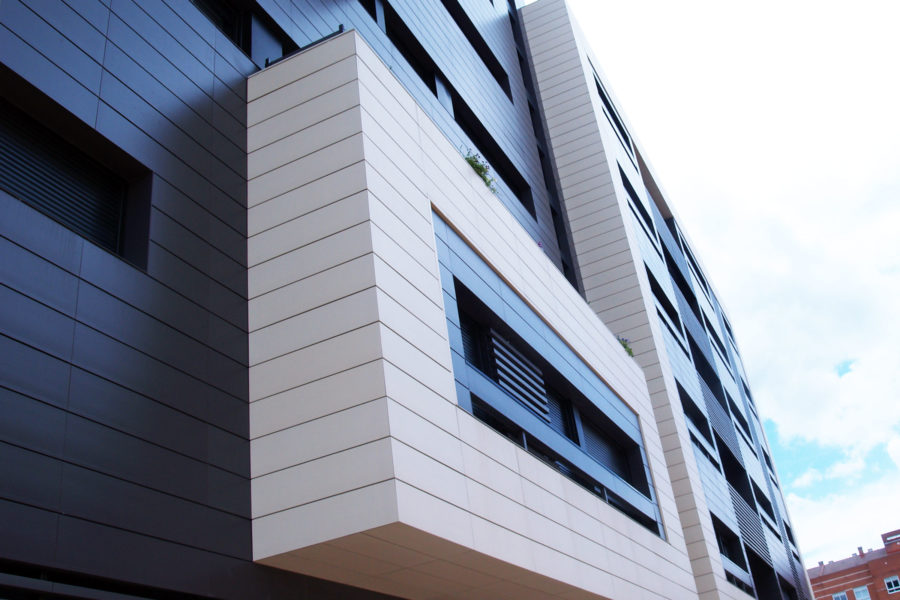
Photo courtesy of IMETCO
We also invest in quality raw materials that guarantee the long-term durability of our products. In terms of materials, ceramic or terracotta panels are made from natural, organic earthen clays, so their production has a very low environmental impact throughout their whole cycle of life. We also work with local suppliers.
Nature creates our raw materials, so looking after natural resources and proactively creating a more sustainable system is an intrinsic part of what we do. This brings added value for our customers, who are increasingly more aware of the impact their habits and consumption have on the environment and sustainability.

